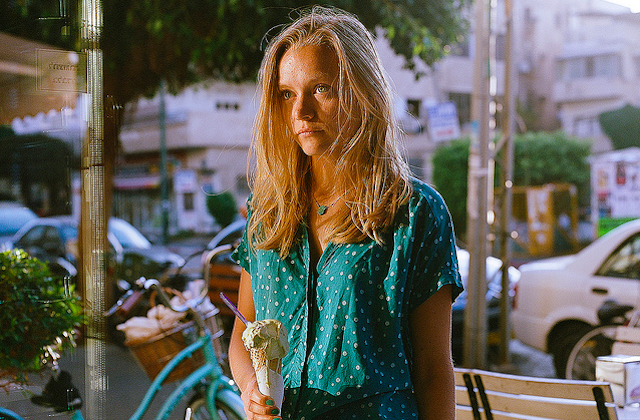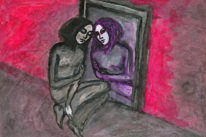
“To ensure good health: eat lightly, breathe deeply, live moderately, cultivate cheerfulness, and maintain an interest in life.” ~William Londen
In essence, interconnectedness refers to the linkages between all things. Some even take it a step further and say that not only is everything linked, but in actuality, there are no real distinctions between you and me, between thought and behavior, or between past, present, and future.
On the surface, the concept of interconnectedness seems simple—everything is linked to everything else, and everyone is linked to everyone else. However, in practice, applying the concept of interconnectedness to the way I live has been anything but simple.
After much contemplation, I came to the conclusion that if I were going to truly live interconnectedness, and not just think or read about it, I would need to fully grasp the fact that my thoughts, actions (or inactions), and outcomes were fundamentally intertwined.
This not only impacted the ways I engaged with others, but also shaped the ways in which I engaged with myself, particularly with respect to what, when, and how I eat.
Interconnectedness Eating
You see, for me, preparing and eating colorful, veg-centric dishes are beautiful, almost spiritual acts. Unfortunately, though, when negative emotions or stress creep into my life, my philosophy on the transcendent nature of food and eating gets replaced by hurried preparations and scarfing down faux-food.
It was during one of my particularly busy weeks that I found myself mindlessly eating cookie dough ice cream for dinner, and thought, “How could interconnectedness help insulate me from this cycle of soothing my negative emotions with poor eating habits?”
First, I tried to document my patterns.
Upon doing so, I realized that when I am sad or angry, I actually don’t eat. I just totally lose my appetite. I also realized, however, that by not eating, I am essentially robbing my body of its ability function and, of course, to regulate my emotions.
Moreover, deprivation also meant that I was not cooking—the one activity, in addition to dancing, that’s a surefire way to turn my negative mood around.
So here it was, interconnectedness working oh so clearly: sadness and anger connected to deprivation, deprivation connected to physiological deterioration, and both of those phenomena connected to me cutting out the very thing that makes me feel better—cooking.
When caught in this cycle, my energy wanes, negative emotions persist, and deprivation runs rampant. It was clear: My feelings, my behaviors, and my body were interconnected.
Going back to stress, rather than not eating at all, I tend to eat a lot when I’m stressed, a lot of sweets, that is. While not total deprivation per se, consuming a bunch of processed sugar leads to similar ends—feeling undernourished, prolonged negative emotions, and negative physical outcomes, as well.
All of this to say, the first part of interconnectedness eating is noticing. Noticing the linkages between our emotions, our thoughts, and our food choices and eating behaviors.
Some folks eat a lot; some do not eat at all. Some folks prefer sweets; some salty or fatty foods. For some people, stress, sadness, and anger elicit the same eating behaviors; for others, there are nuances between the three. The point is, it’s important to ask yourself what are your specific patterns?
Then what? What do you do once discovered your patterns?
Set a Mood of Joy By Creating a Nourishment Ritual
Stop.
Now, when I’m sad, angry, or stressed, I stop. I stop, I note what I am feeling, and then I think about what role I have played, either through my actions or through my appraisals of the situation, in whatever has led me to feeling negative. I remember that I am interconnected with whatever it seems like on the surface is causing my negative mood.
Importantly, just as I help to create my own sadness, anger, or stress, I can also transform my sadness, anger, or stress into my joy.
Again, how you may ask? By going into full on nourishment mode.
I put on a frilly apron, which makes me feel cute, and turn up some Latin or Brazilian music, which soothes my soul. In short, I start by setting a mood of joy, even I do not feel joyful yet. By starting the ritual of nourishment before food ever touches my tongue, I’m on track to a better mood and healthy actions.
Next, I think about a dish to make, one with aromas that tantalize my nose and with colors that intrigue my eyes. Then, I start to prepare the dish. I cut, stir, whip, and sauté with care. In this way, cooking becomes a calming, nourishing act of mindfulness in and of itself.
Once my dish is prepared, I set the table. Then, I serve myself, give thanks, and taste my culinary creation. With each bite, I’m reminded of just how lucky I am to have access to food, and with each moment of gratitude, a little bit of my sadness, or anger, or stress dissipates.
Even when I do not have time to cook, I do this last set of actions—setting a place at the table, savoring my food, and evoking gratitude because I’ve found that just the act of slowing down can be realigning.
I Still Have Far to Go
Although I still have a lot of progress to make before I completely stop reaching for ice cream after a stressful day, I can see the difference in my eating after recognizing that my emotional, physical, spiritual, and social selves all benefit when I embrace their interconnectedness.
We all owe it to ourselves to be conscientious about our eating patterns, but with so many demands, it can be exhausting to do so consistently.
I truly believe though when we recognize interconnectedness and embrace the power we all have to create joy in our lives, we liberate ourselves. Why not use this power in the context of something we do each and every day—eat.
Photo by Masha Kushnir
About Tiffany Griffin
Tiffany Griffin, Ph.D. is a psychologist who founded the veg-centric consultancy, Como Water. She also works in international food security, and previously worked as a food/health aide in the U.S. Senate. Author of Savory Sweet Veg, Tiffany is a lover of food, laughter, world music, the color pink, and documentaries.












 Though I run this site, it is not mine. It's ours. It's not about me. It's about us. Your stories and your wisdom are just as meaningful as mine.
Though I run this site, it is not mine. It's ours. It's not about me. It's about us. Your stories and your wisdom are just as meaningful as mine. 